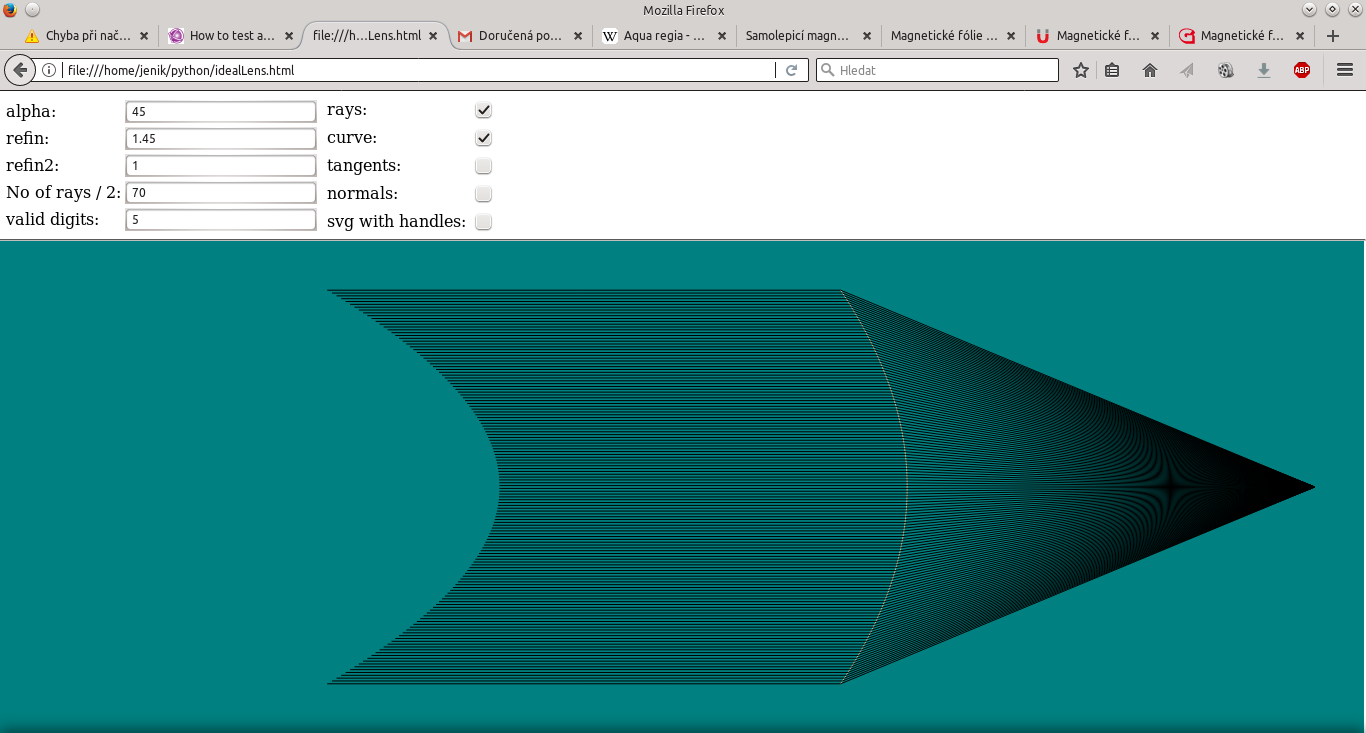- #1
kokes
- 39
- 2
I have patent pending on this. I am publishing despite that. Patents last 20 years at the most, plus it can be researched already.
I choose a focal point. I dirve rays from it in a fan fashion toward lens, which for now is in shape of mere segment. The segment has its position in horizontal plane and its given height. For each ray I can calculate what inclination will our now straight curve have in point of intersection so that refracted ray leads horizontally. I move points of the curve so that it corresponds with calculated derivatives.

But this moves the points into different distance from focal point and originally calculated derivatives will no longer refract the rays horizontally. I repeat the process with more and more exact curve, until I reach required tolerance.
The script can be downloaded from github: https://github.com/jankokes/idealLens
EDIT: This thread should have been called "recalculated". To me it was extremely dificult to find any info on the ideal lens, so I thought it would be nice if I explained where I was wrong and which post shows correct answer right at the top. Jan
I choose a focal point. I dirve rays from it in a fan fashion toward lens, which for now is in shape of mere segment. The segment has its position in horizontal plane and its given height. For each ray I can calculate what inclination will our now straight curve have in point of intersection so that refracted ray leads horizontally. I move points of the curve so that it corresponds with calculated derivatives.
But this moves the points into different distance from focal point and originally calculated derivatives will no longer refract the rays horizontally. I repeat the process with more and more exact curve, until I reach required tolerance.
The script can be downloaded from github: https://github.com/jankokes/idealLens
EDIT: This thread should have been called "recalculated". To me it was extremely dificult to find any info on the ideal lens, so I thought it would be nice if I explained where I was wrong and which post shows correct answer right at the top. Jan
Attachments
Last edited by a moderator:







